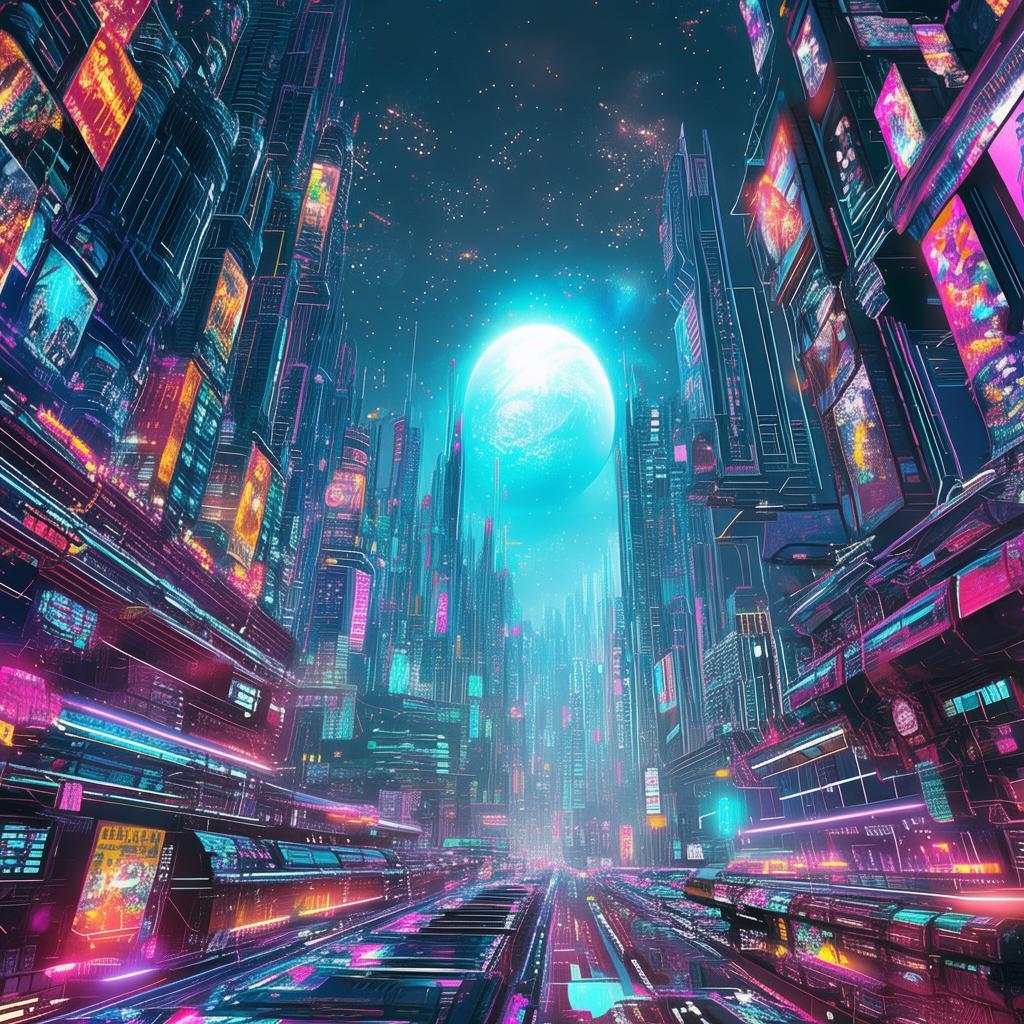Canvas of the Dying Muse
In the year 2147, the world had been reshaped by the Great Blackout, a catastrophic event that plunged the Earth into darkness and chaos. The remnants of humanity clung to life in a network of underground cities, where the surface was a wasteland, and the sky a permanent twilight. In this bleak landscape, art had become a forbidden and dangerous thing, a relic of the past that the ruling technocracy deemed too volatile to tolerate.
Amara was an artist, though she had never seen the light of day. Born into the service of the Union of Creative Dissidents, a secret society that thrived in the shadows, she spent her days crafting delicate sculptures from the refuse of the world above. Her work was a testament to the beauty that could still be found in the ruins, a whisper of a world that had once been vibrant and full of life.
The Union had been established by the Dead Artists’ Union, a group of artists who had perished during the Great Blackout, their spirits bound to their creations. They watched over the living, guiding them with their collective wisdom, and Amara was one of the few who had been touched by their influence.

One day, the Union received a message. It was a cryptic transmission, a visual poem that seemed to speak of a greater truth hidden in the darkness. Amara was chosen to interpret it, and as she delved into its meaning, she discovered that the Dead Artists’ Union was more than just a legend; it was a force of resistance, a beacon of hope in the hearts of the oppressed.
The message led her to a hidden archive, a repository of knowledge and art that had been preserved by the Dead Artists’ Union. There, she found a plan to restore light to the world, a plan that required her to become the leader of a rebellion against the technocracy. The Union had chosen her because she possessed the rare gift of being able to see through the eyes of the Dead Artists, to understand their vision.
As Amara prepared to embark on her mission, she knew that she would face many challenges. The technocracy was a powerful force, and their surveillance was omnipresent. Yet, she was driven by a sense of purpose, a belief that the world could be reborn from the ashes of the Great Blackout.
She gathered a group of like-minded individuals, each with their own unique skills and talents. There was Lior, a hacker who could breach the most secure of systems; Kaela, a linguist who could decode the technocracy’s arcane language; and Zane, a former soldier who had lost his way but found his purpose in the cause. Together, they formed a band of rebels, a group of misfits who believed in the power of art to inspire change.
The rebellion began with small acts of sabotage, subtle disruptions that sowed seeds of doubt and unrest among the citizens of the underground cities. Amara used her art to spread messages of hope, creating murals and sculptures that spoke of a world that could be, if only they dared to dream.
But the technocracy did not take kindly to such dissent. They launched a crackdown, hunting down the rebels and anyone who dared to question their authority. The situation grew increasingly desperate, and the rebels were forced to go underground, taking refuge in the same archive that had inspired Amara.
It was there, in the heart of the archive, that the climax of the story unfolded. The technocracy had discovered the rebels’ hideout and were closing in. Amara knew that she had to act quickly, or they would all be caught and executed.
She turned to the Dead Artists’ Union, seeking their guidance. In a vision, the spirits of the Dead Artists revealed a way to harness the power of their collective energy, a way to create a light so bright that it could pierce through the darkness and expose the truth of the technocracy’s rule.
Amara and her team set their plan in motion, using the archive’s ancient technology to create a massive, glowing sculpture that would serve as a beacon of resistance. As the sculpture began to emit its light, the technocracy’s defenses faltered, and the citizens of the underground cities began to rise up in rebellion.
In the end, it was the power of art that triumphed. The light of the sculpture shattered the technocracy’s hold over the people, and a new era of hope began to dawn. Amara had become a symbol of resistance, a muse who had brought light back into the world, even in the darkest of times.
The story of Amara and the Dead Artists’ Union would be whispered for generations, a testament to the enduring power of creativity and the unyielding spirit of those who fight for a better world.
✨ Original Statement ✨
All articles published on this website (including but not limited to text, images, videos, and other content) are original or authorized for reposting and are protected by relevant laws. Without the explicit written permission of this website, no individual or organization may copy, modify, repost, or use the content for commercial purposes.
If you need to quote or cooperate, please contact this site for authorization. We reserve the right to pursue legal responsibility for any unauthorized use.
Hereby declared.









